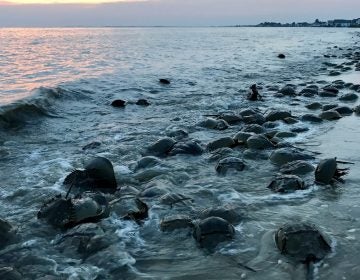Study: 251,000 N.J. homes at risk of chronic tidal flooding by 2100
A new study released by a science advocacy organization paints a sobering picture of the sea level rise threat to New Jersey.

Tidal flooding in Stone Harbor in Feb. 2016 as photographed by Zeke Orzech (@Zeke_O via Twitter).
A new study released by a science advocacy organization paints a sobering picture of the sea level rise threat to New Jersey.
The study released by the Union of Concerned Scientists found that New Jersey is second in the nation for most homes at risk of chronic tidal inundation by both 2045 and the end of the century.
Cape May County’s Ocean City tops the list of most at risk in the state, with more than 7,200 homes at risk by 2045, according to the study. By 2100, 251,000 homes are at risk throughout the Jersey Shore.
The study also found that nearly 20 percent of the at-risk homes were built after 2000, of which 2,600 dwellings facing chronic flooding by 2045 built or rebuilt after Superstorm Sandy.
The flooding would also have a significant impact on the economy. The study found that the New Jersey homes at risk by 2045 currently pay nearly $400 million in annual property taxes.
The organization has released an interactive tool, available here, to see the projected impact by municipality.
Earlier this month, the National Oceanic and Atmospheric Administration said that high-tide flooding, sometimes called sunny-day or “nuisance flooding,” tied or set records last year in more than a quarter of the 98 places the agency monitors around the country.
Ben Horton a Rutgers University researcher who was not involved in the study, called it “a warning, a shot across the bow.”
“Across the whole of the U.S. coastline, we are in dire need of action,” he said.
As sea levels rise, coastal communities around the U.S. are experiencing flooding that closes roads or inconveniences daily activities on an increasing basis.
Two of the three main entrances to Atlantic City are often flooded by tides, with one or both lanes having to be shut down for hours at a time.
The Associated Press contributed to this report.
WHYY is your source for fact-based, in-depth journalism and information. As a nonprofit organization, we rely on financial support from readers like you. Please give today.




